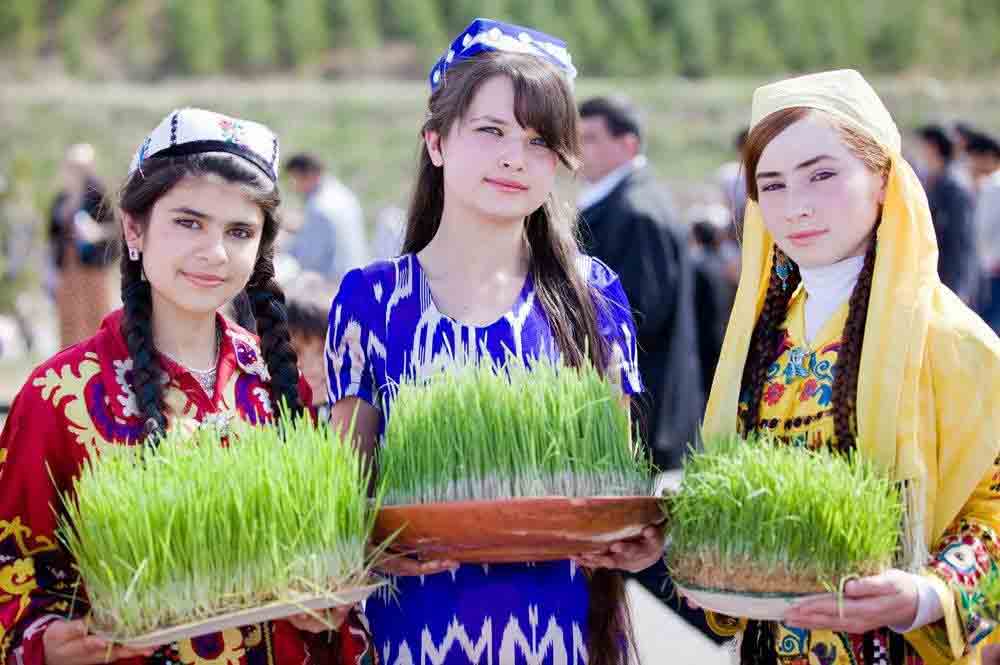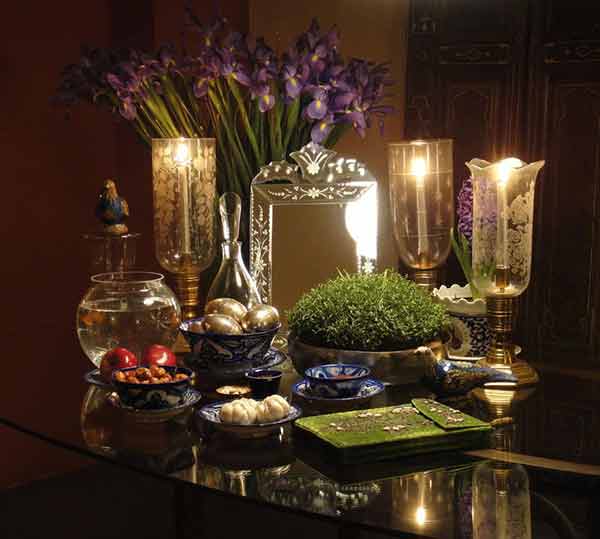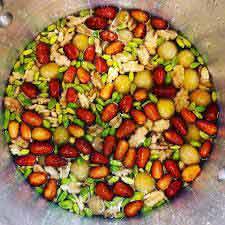Happy Nowruz!

Nowruz is the traditional New Year, celebrated in many countries such as Iran, northern Iraq, Turkey Azerbaijan, Afghanistan, Albania, Georgia, the countries of Central Asia such as Turkmenistan, Tajikistan, Uzbekistan, Kurdistan, Kyrgyzstan and Kazakhstan. It is also celebrated among various other Iranian and Turkic people in Iraq, Syria, Pakistan, India, northwestern China, the Caucasus, the Crimea and the Balkans.
Nowruz in Calendar

Tajik-girls-celebrating-Nowruz
Nowruz [noruz] marks the first day of spring and the beginning of the new year in Iranian Calendar. It is celebrated on the day of the astronomical vernal equinox that is the start of spring in the northern hemisphere. This usually occurs on the March the 21st or the previous or following day depending on where Nowruz is observed.
Origin
Despite its Iranian and Zoroastrian origins, Nowruz has been celebrated by diverse communities for over 3,000 years. It is a secular holiday for most celebrants and is enjoyed by people of several different faiths, but remains a holy day for Zoroastrians.
Etymology
The word Nowruz means “new day“. Seasons plays a vital part in culture. After a severe winter, the

chahar-shanbe-suri-festival-fire-in-Iran–celebration-of-light-winning-over-darkness
beginning of spring traditionally has been a great occasion with mother nature rising up in a green robe of colorful flowers and the cattle delivering their young.
Preparations
Persians, Afghans, Kurds and other groups start preparing for the Nowruz with a major spring cleaning of their houses, the purchase of new clothes to wear for the new year and the purchase of flowers in particular the hyacinth and the tulip are popular and conspicuous in association with the rebirth of nature.
Chaharshanbe Suri
The night before the last Wednesday of the year, is celebrated by the Iranian people as chaharshanbe-suri [čâhar-šanbe(h)-suri], the Iranian festival of fire. This festival is the celebration of light winning over darkness the symbolism behind the rituals is all routed back to Zoroastrians.

Haft-sin-table-with-seven-symbolic-items
On the New Year’s Day, families dress in their new clothes and start the 12-day celebrations by visiting the elders of the family.
Rituals
Customs and rituals of Nowruz may vary from one group to another. In Iran, on the first day of Nowruz, family members gather around the table with the haft seen on the table or set next to it and await the exact moment of the arrival of spring. At that time, gifts are exchanged.
Haft-sin
Haft-sin [In English: seven items beginning with the letter (S)], is an arrangement of seven symbolic items whose names start with the letter ‘S’ (س) in the Persian alphabet. These items are also known to be symbols of wisdom, health, happiness, patience, wealth, fruitfulness.
Haft-mewa

haft-mewa
In Afghanistan, people prepare Haft Mēwa (English: seven fruits) for Nowruz, a mixture of seven different dried fruits and nuts (such as raisins, Persian olives, pistachios, hazelnuts, prunes, walnut, and almonds) served in syrup.
Visits
In Nowruz holidays, people are expected to visit one another. Because of the house visits, you make sure you have a plentiful supply of pastry cookies fresh and dried fruits and special nuts on hand as you typically serve your visitors with these items with tea or sherbet.
Believes
Some Nowruz celebrants believe that whatever a person does on Nowruz will affect the rest of the year so if a person is kind and warm to their relatives, friends and neighbors on Nowruz then the new year will be a good one!

